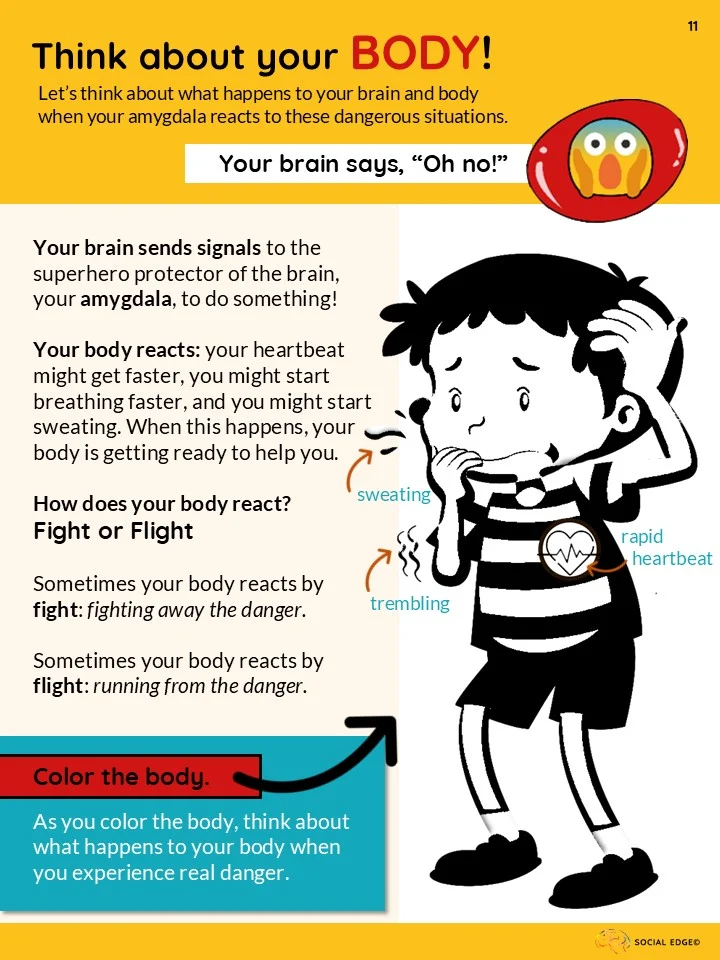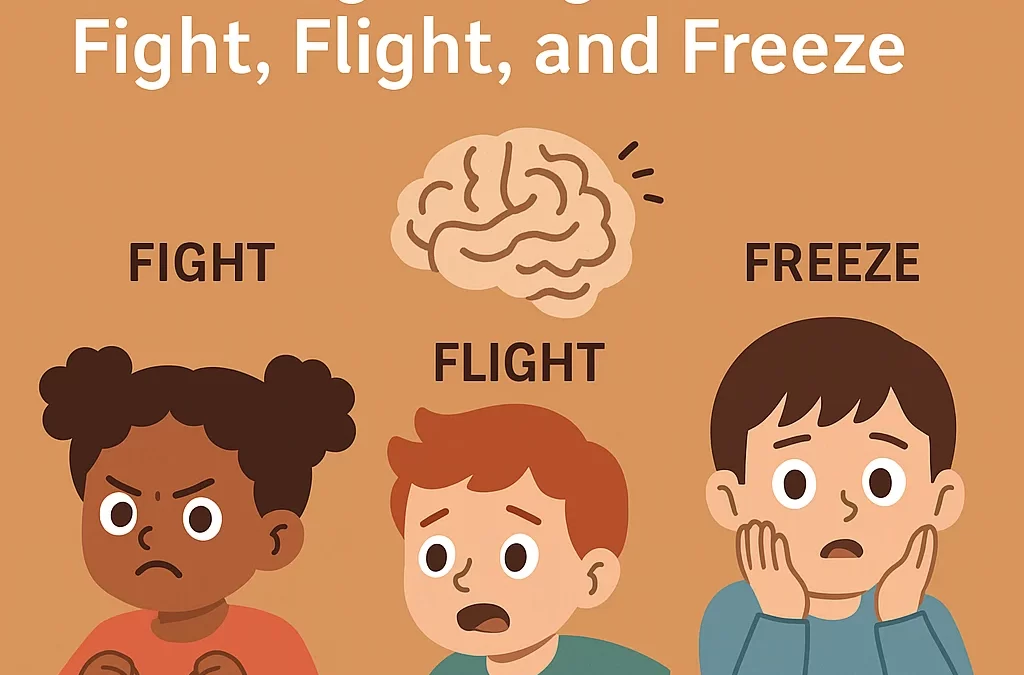By Social Edge Ambassador: Ishita Singh
Young children are still learning how to make sense of the world around them—including their emotions and bodily sensations. One of the most important emotional responses to understand is fear. Fear is a natural reaction that triggers what’s known as the fight-flight-freeze response. This built-in survival mechanism helps protect us from harm, but for children, it can often feel overwhelming and confusing.
By helping kids recognize and understand this response, we empower them to better manage their emotions, navigate stress, and build the foundation for strong emotional intelligence later in life.
Understanding the Fight-Flight-Freeze Response
When a child encounters something they perceive as scary or dangerous, their brain activates a small but powerful structure called the amygdala. This part of the brain is responsible for detecting threats and sounding the alarm. Once activated, the amygdala sends signals throughout the body to prepare it to either fight the threat, run away from it, or freeze in place.
Each response is natural and helpful depending on the situation:
- Fight: The child might clench their fists, raise their voice, or feel a surge of energy to stand up for themselves. Their muscles tense, and their heart starts pounding.
- Flight: The child might feel the need to run or get away. Their legs might feel jumpy, and they could move quickly without even thinking about it.
- Freeze: Sometimes, the body responds by becoming very still. The child might feel stuck or unable to move. They may not know what to do next, and this can be scary on its own.
These reactions are all normal. They are the body’s way of keeping us safe. But when children don’t understand what’s happening, they may feel like something is wrong with them. That’s why it’s so important to teach them about these signals early on.
1. Explain the Mind-Body Connection in Simple Terms
To start, talk with children about how their brain and body work together. When they feel scared or worried, it’s their brain’s way of saying, “Be alert! Something might not be safe.” You can use phrases like, “Your brain is your body’s superhero—it looks out for danger and gets your body ready to react.”

Let them know that things like a racing heart, sweaty hands, or a nervous tummy are not bad—they’re signals from the brain getting the body ready to act. When kids learn this, they’re less likely to be afraid of their own reactions and more likely to talk about how they feel.
2. Help Children Reflect on Their Own Experiences
A powerful way to help children understand their fight-flight-freeze response is to guide them in thinking about past experiences. Ask questions like:
- “Have you ever been so scared that you didn’t know what to do?”
- “What did your body feel like when that happened?”
- “Did you want to run away or did you feel frozen?”
Encouraging children to reflect helps them recognize patterns in how their body reacts to fear. This builds their emotional vocabulary and helps them feel more in control the next time they face a stressful situation.
3. Use Visuals and Hands-On Learning
Visual tools can make abstract concepts easier for young children to understand. Try using a body outline where children can draw or place stickers on the areas they feel changes when they’re scared or nervous—like their chest for a fast heartbeat or their legs when they feel the urge to run.
You can also create role-playing activities. For example, act out scenarios (like hearing a loud noise or meeting a new person) and ask children how their body might react. These types of interactive exercises help kids connect emotions to actions and understand that their responses are valid and manageable.
Conclusion: Giving Kids the Tools to Cope
By teaching children about the fight-flight-freeze response in age-appropriate and engaging ways, we help them gain insight into their emotional world. They learn that fear is not something to be ashamed of—it’s something to understand and manage. When children recognize the signals their body sends them, they’re better prepared to calm themselves down, ask for help, or make safe choices.
This self-awareness is a key part of emotional intelligence and mental wellness. As kids grow, these skills will help them handle challenges with more confidence, communicate their needs more clearly, and feel proud of the way they care for their minds and bodies.
Helping children understand their internal superhero—the amygdala—and the body’s built-in danger response is one of the first steps in raising emotionally intelligent, resilient, and self-aware individuals.

